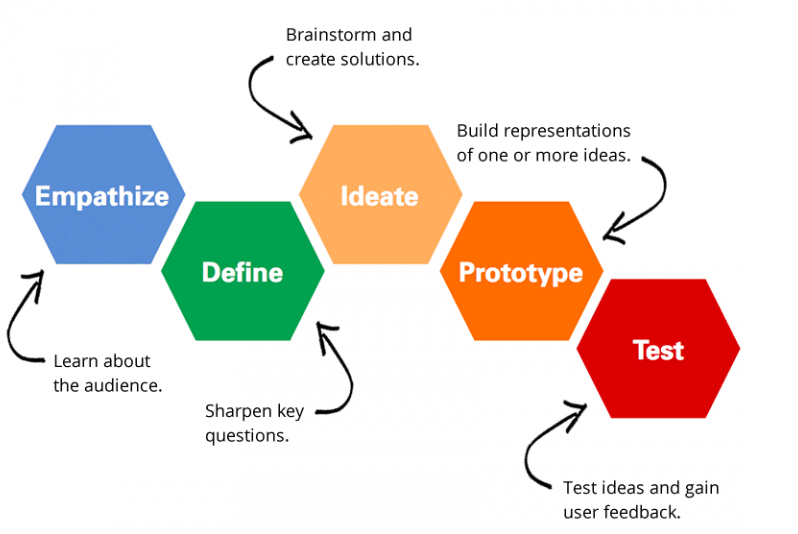What is Business Process Re-engineering?
It is a business management strategy that focuses on analysing and redesigning business workflows and processes in an organisation. It leverages various frameworks from design-thinking to lean Six sigma to propose solutions that remove waste and streamline processes.
Design Thinking Approach
Design Thinking is a design methodology that provides a solution-based approach to solving problems. It is summarised by the following diagram

Lean Six Sigma
Lean thinking -
Six Sigma follows the DMAIC methodology (D - Define, M - Measure, A - Analyse, I - Improve, C - Control). It develops the improvement projects that enhance the efficiencies and effectiveness of the bottomneck, after measuring and analysing the existing business data.
Click on the icon below to download the list of common BPR solutions to streamline processes:

5 steps to conduct business process re-engineering
Step 1-Define Objectives and Framework
First of all, the objective of re-engineering must be defined in the quantitative and qualitative terms. The objectives are the end results that the management desires after the reengineering. Once the objectives are defined, the need for change should be well communicated to the employees because, the success of BPR depends on the readiness of the employees to accept the change.
Step 2-Identify Customer Needs
While, redesigning the business process the needs of the customers must be taken into prior consideration. The process shall be redesigned in such a way that it clearly provides the added value to the customer. One must take the following parameters into the consideration:
1)Type of Customer and customer groups.
2)Customer’s expected utilities in product and services.
3)Customer requirements, buying habits and consuming tendencies.
4)Customer problems and expectations about the product or service.
Step 3-Analyse the Existing Process
Before deciding on the changes to be made in the existing business process, one must analyze it carefully. The existing process provides a base for the new process and hence 'what' and 'why' of the new process can be well designed by studying the right and wrongs of the existing business plan.
Step 4-Formulate a Redesigned solution to Improve
Once the existing business process is studied thoroughly, the required changes are written down on a piece of paper and is converted into an ideal re-design process. Here, all the changes are chalked down, and the best among all the alternatives is selected.
Step 5-Implement and monitor solution
Finally, the changes are implemented into the redesign plan to achieve the dramatic improvements. It is the responsibility of both the management and the designer to operationalise the new process and gain the support of all.
Thus, the business process reengineering is collection of interrelated tasks or activities designed to accomplish the specified outcome.

